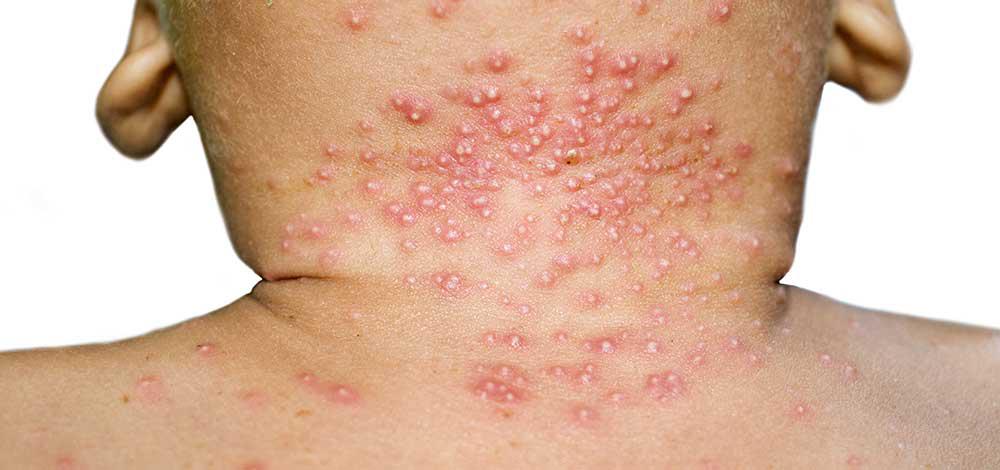Cold Sore vs. Impetigo: Navigating Skin Infections in Children with Ease
Oh, dear parents and caregivers! When it comes to the health of our little ones, every unusual spot or blemish can send us into a flurry of concern. Two contenders that might catch us off guard are cold sores and impetigo. Both of these skin conditions can be distressing and somewhat confusing, especially when they show up on the delicate skin of our children. But fear not! In this cheerful guide, we’ll journey through the world of cold sores and impetigo so you can identify, manage, and prevent these common skin issues with confidence.
What Are Cold Sores?
Say hello to herpes simplex virus type 1 (HSV-1), the mastermind behind cold sores. These tiny blisters filled with love—well, liquid—typically grace the lips, mouth, or nose areas. It’s like they can’t help but show up uninvited to the party. HSV-1 is highly contagious, but also incredibly common. So, if your kiddo brings one home, remember, it’s a normal part of the childhood experience!
Recognizing Cold Sore Symptoms
Cold sores often announce their arrival with a tingly sensation, a bit of redness, and some swelling. These symptoms may seem like a wave hello, but they’re the first signs that a blister is going to pop up. After the initial greeting, the blisters form, giving your child a little cluster of spots to manage. Following a performance that lasts about two weeks, they typically bid adieu and the skin heals. It’s like a miniature drama on the face!
What is Impetigo?
Moving on to another character in our tale, impetigo is caused by one of two bacteria: Staphylococcus aureus or Streptococcus pyogenes. This condition is also known for making a rather dramatic entrance due to its appearance. Impetigo can star in a show anywhere on the body but loves to take center stage on the face, arms, and legs of kids aged 2 to 5.
Spotting Impetigo Symptoms
Impetigo quite often rolls out the red carpet with red sores that quickly morph into honey-colored crusts. It’s like they’re trying to masquerade as lovely golden accessories, but really, they’re a signal that your child’s skin needs some attention. Because of this cunning disguise, impetigo might be mistaken for an innocent scrape turned rogue. Remember, these unwelcome guests are also highly sociable, spreading easily through direct contact or shared items.
Cold Sore vs. Impetigo: How to Tell the Difference
Now that we’re acquainted with our two little troublemakers, let’s play the game of ‘Spot the Difference.’ Your keen eye will be crucial here. Cold sores are usually singular in their performance, often showing up alone or with just a few friends. Impetigo, on the other hand, prefers a party, with clusters of sores showing up to mingle.
Texture and location can also be telltale signs. Cold sores love to stick close to the mouth, and they have a distinct blister-like appearance. Impetigo is less picky about location and has the signature look of a crust that could easily pass for a drizzle of caramel if it wasn’t on the skin.
What Causes Cold Sores and Impetigo?
Both of these conditions might seem as though they’ve simply appeared out of thin air, but they each have their own unique spark that sets them off. For cold sores, the trigger might be anything from stress, sunshine, or even a birthday bash. Yes, even happy occasions can bring on a blister. For impetigo, the bacteria typically enter through cuts or insect bites—think of it as a not-so-magical ticket to the impetigo experience.
Understanding what’s at the root of these conditions is essential, as it helps us know what measures we can take to prevent future curtain calls. Don’t fret! These aren’t reflections on your superhero parenting skills. These common childhood buddies just pop by for a visit from time to time.
Stick with us, as we dive deeper into the realm of prevention and treatment for cold sores and impetigo. Keep those spirits high because, armed with knowledge and a heart full of love, you’ll be ready for any skin adventures your little one might encounter.
So let’s get ready to turn those worried frowns upside down and explore the best ways to keep our children’s skin happy and healthy. In the next section, we’ll cover the treatment options, home remedies, and prevention strategies that’ll have you conquering these conditions like a pro.

5 Essential Tips for Parents: Preparing for Cold Sores and Impetigo
1. Enhance Your Detective Skills
As a savvy parent, understanding the distinct features of cold sores and impetigo is your first superpower. Cold sores come from a virus and look like small, fluid-filled blisters, often around the lips. Impetigo’s bacterial roots lead to red sores or blisters that burst, ooze, and develop a yellow-brown crust. Keeping a close eye on these skin quirks will help you act swiftly and accurately.
2. Focus on Hygiene Superpowers
Hygiene is your shield! Regular handwashing can block the spread of both cold sores and impetigo. Teach your young superheroes the importance of sudsing up thoroughly and frequently. Emphasizing hygiene can feel like a grand adventure in keeping the family fortress safe from skin-invading critters.
3. Nail Strategic Prevention Maneuvers
For cold sores, a sunshield (sunscreen) can ward off flares triggered by sunlight. Moisturizing lip balms can also serve as protective barriers. In the impetigo arena, donning armor (clean clothing and bandages over injuries) stops bacteria in their tracks. Spot a scratch or bite? Clean it pronto with soapy water or an antiseptic to keep the bacteria at bay.
4. Deploy Home Care Tactics with Love
Should cold sores or impetigo visit, mild home care can offer comfort. For cold sores, cuddles and cool compresses can ease discomfort. With impetigo, gently cleansing the affected area with antiseptic and applying prescribed creams can make your little one feel like a star patient. Always approach care with tenderness – your love is the most potent medicine.
5. Forge Alliances with Health Care Professionals
Your family doctor or pediatrician is your trusted sidekick. If any skin infection seems to be going rogue or causing distress, an appointment should be on your to-do list. They possess the magical potions—prescription antiviral meds for cold sores and antibiotics for impetigo—that can send these skin foes packing.
Treatment Tactics for Cold Sores and Impetigo
When cold sores or impetigo breach the defenses, fear not! A pediatrician can prescribe antiviral medications for cold sores, which work best when used at the first sign of an outbreak. In the fight against impetigo, a combination of prescribed topical and oral antibiotics can clear the infection effectively.
While wielding these medical weapons, maintaining the hygiene shield and comfort care is paramount. A united front of home and medical therapies will have your little one back to their joyful, carefree self in no time.
Preventative Measures: Your Ultimate Armor
Prevention is your fortress. For cold sores, lowering stress and protecting against colds can decrease the likelihood of an outbreak. With impetigo, keeping skin clean, handling cuts and scrapes with care, plus avoiding the sharing of towels and toys are invaluable strategies.
Remember, parents, with knowledge as your guide and love as your motivation, you’re already a hero in your child’s story. Keeping a watchful eye, maintaining good hygiene, and seeking timely medical advice will help you keep your household’s skin saga a tale of triumph.
By becoming confident in differentiating between cold sores and impetigo, mastering the art of prevention, honing in on quick and loving care, and teaming up with health care providers, you’ll be well-equipped to handle these skin conditions with grace and ease. So, embrace those superhero capes, as you nurture and protect your little ones towards healthy, happy skin.
See more great Things to Do with Kids in New Zealand here. For more information see here
Disclaimer
The articles available via our website provide general information only and we strongly urge readers to exercise caution and conduct their own thorough research and fact-checking. The information presented should not be taken as absolute truth, and, to the maximum extent permitted by law, we will not be held liable for any inaccuracies or errors in the content. It is essential for individuals to independently verify and validate the information before making any decisions or taking any actions based on the articles.




